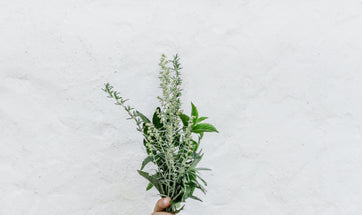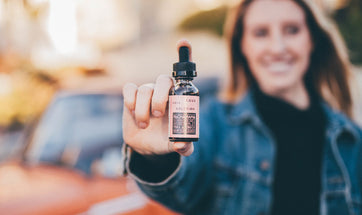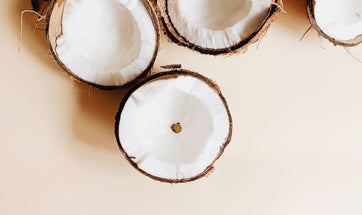do you trust your cbd? an interview with clean label project's jackie bowen
It’s hard to trust what’s in your CBD when the CBD industry is flooded with fly-by-night companies. Unsafe levels of lead, 700% more CBD than what is on the label, no CBD at all – these are just some of the findings when CBD products were put to the test.
The Clean Label Project (CLP), a nonprofit organization that tests consumer goods for contaminants, recently tested 242 of the most commonly purchased CBD products. CLP works to ensure that all consumer products are accurately labeled so consumers know exactly what they are putting into their bodies. Products that are accurately labeled and determined as high quality through rigorous testing are given the Clean Label Project’s Purity Award. Pachamama recently received a Clean Label Project Purity Award for our commitment to accurately informing our customers of what is in our products.
To explain why it’s important for CBD manufacturers to accurately label their products, we interviewed Clean Label Project’s Executive Director Jackie Bowen. Here’s what she had to say about the issue.
Before we talk about the Clean Label Project, I was wondering if you could talk about your professional background.
Sure. I always tell people I am a food and consumer product quality and safety systems engineer, which makes me a professional buzzkill at dinner parties and an actual, legitimate, Debbie-Downer if you don’t want to know about the true contents of what you’re eating or drinking. Before coming to Clean Label Project, I worked for the World Health Organization Collaborating Center for 15 years , NSF International, working on safety and water quality standards, as well as different enforcement and compliance programs behind those such as the Global Food Safety Initiative, Certified Organic, Certified Non-GMO Project, Certified Gluten Free.
Could you tell me about the Clean Label Project and your mission?
The Clean Label Project is a national nonprofit with the mission of bringing truth and transparency to consumer product labeling. We believe that what's not on the label is sometimes what matters most. Marketing departments do a really effective job at selling comfort and security. So for us at the Clean Label Project, it's data and science we trust.
What we do is we go out and we purchase products from grocery store shelves to simulate the consumer shopping experience. The only difference is instead of trusting the marketing, we take them to analytical chemistry labs where we have the products tested to figure out what's actually inside.
The Clean Label Project conducted a massive study of CBD products on the market. Could you tell me about that study?
The Clean Label Project tested 208 of the top-selling CBD products. The way we got our list is we took inspiration from the Amazon.com Best Sellers list, as well as different online blogs and websites that make recommendations for different products. We call this Consumer Chain of Custody sampling and testing.
In most certification programs, a brand will submit samples for testing and they'll get a test report that comes over email on how the product performs. At the Clean Label Project, we go to actual retail stores, whether they're local co-ops, national retailers or brand websites, and we purchase the products the exact same way a consumer would by putting it in our grocery cart. Another key difference is that we take [the products] to an analytical chemistry laboratory for testing.
So, in this case, we had the CBD products tested for a variety of things: Potency, in terms of CBD content, THC content and industrial and environmental contaminants and toxins.
Interesting. And what did you learn from testing these CBD products?
Collectively, what you see is significant systemic quality assurance and quality control issues. There were three high-level takeaways from the study. The first is potency variability. We found that in 70% of the top-selling CBD products, the quantity of CBD in the packaging was varied by greater than 10%. In other words, if the CBD product said that it contains, let's say, 100 milligrams [of CBD], 70% of the time it would have 110 milligrams or more or 90 milligrams or less. So it's off in terms of the declared amount.
More concerning was the fact that approximately 5% of the top-selling CBD products had little to no CBD in them at all. On the other side, there were a handful of products that had as much as seven times the amount of CBD declared on the label. So some products claimed to have 200 milligrams of CBD, but actually had 1,400 milligrams. If you’re a consumer new to the CBD market, what you want is consistency. You want reproducibility. And it makes it really hard to figure out the right dose for you when you see the amount of variability that exists in the marketplace.
The second thing that was concerning was positive testing for THC. When we tested the top-selling CBD products, 40% of the products contained at least trace levels of THC. Where this poses an issue is that if consumers don't know that they're consuming even trace quantities of THC, this could pose a risk for both brands, as well as consumers. We are starting to see stories of consumers who consume CBD and, allegedly, are testing positive in drug screens for THC, and attributing this back to the CBD they’re consuming.
The third thing that was interesting in terms of our findings were the levels of phthalates and lead. Phthalates are chemicals used to make plastic more flexible, also known as plasticizers. Typically in products we test, we see phthalates in the double digits parts per billion, sometimes triple digits. What we saw in some CBD products was thousands of parts per billion. I'm not exactly sure the source of that, but seeing that quantity of phthalates was concerning.
Levels of lead that we observed in CBD exceeded 30 parts per billion. To put that number into context, the average amount of lead found during the Flint, Michigan drinking water crisis was around 20.
Wow. Obviously, these findings would certainly be concerning for anyone who uses CBD products. So what are some ways that consumers who are looking at CBD products can know that the product they're purchasing are what they’re expecting, and not like the products with these problems?
I think it’s important to note that many brands out are doing their diligence, like Pachamama. What I love about the CBD industry is how much it’s embraced transparency. With the use of things like QR codes, you can actually go back to websites and see these test reports. The challenge that I see with these tests reports, is that the average brand tests for 14 different things. Clean Label Project tested for 400. For consumers, you're going to want to review these test results.

Are there any indicators that a CBD manufacturer has done their diligence and tested for more than the 14 standard issues?
I would definitely look at Clean Label Project's certification and our Purity Award as a mark of quality. In the absence of federal regulation, these brands aren't being held accountable. The Clean Label Project is the one going out to actual grocery stores and buying the products that are in pantries, refrigerators, gym bags and medicine cabinets across America. The brands that sign on for the Clean Label Project are saying ‘I am so confident in my supply chain and my finished products that I've enlisted a third party to randomly test us to make sure that we maintain these high standards.’ So look for Clean Label Project certification in both CBD products, as well as the other aisles within your grocery store.
Are there any factors that trustworthy brands all shared, or all untrustworthy brands shared?
I see this across all suited consumer packaged goods, whether it's infant formula, baby food, pet food, protein powder or CBD, brands that are vertically integrated have a better chance of a higher quality finished product. Brands that voluntarily choose to stay involved with their farmers and make sure to maintain that high level of consistency and quality during manufacturing and processing generally produce a higher quality finished product.
Want to learn more? Sign up for our newsletter, here!
OUR NEWSLETTER
Get the latest news you need, straight to your inbox.




